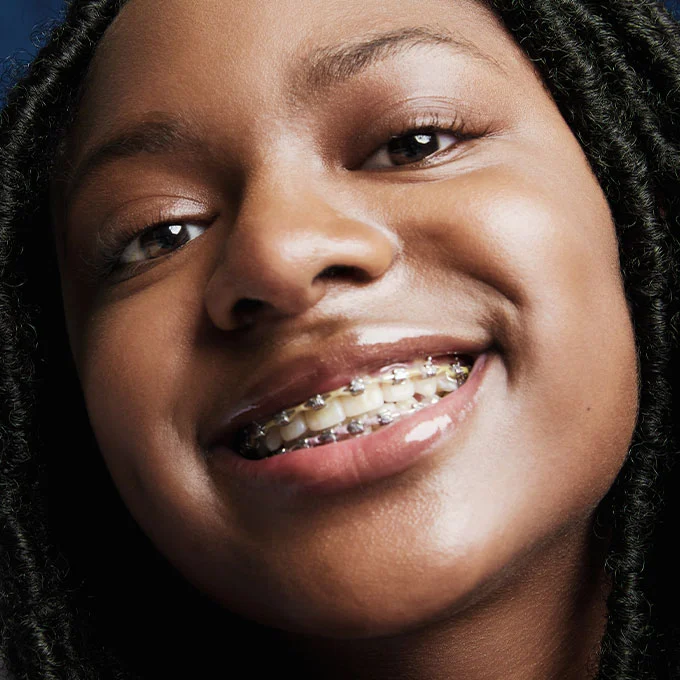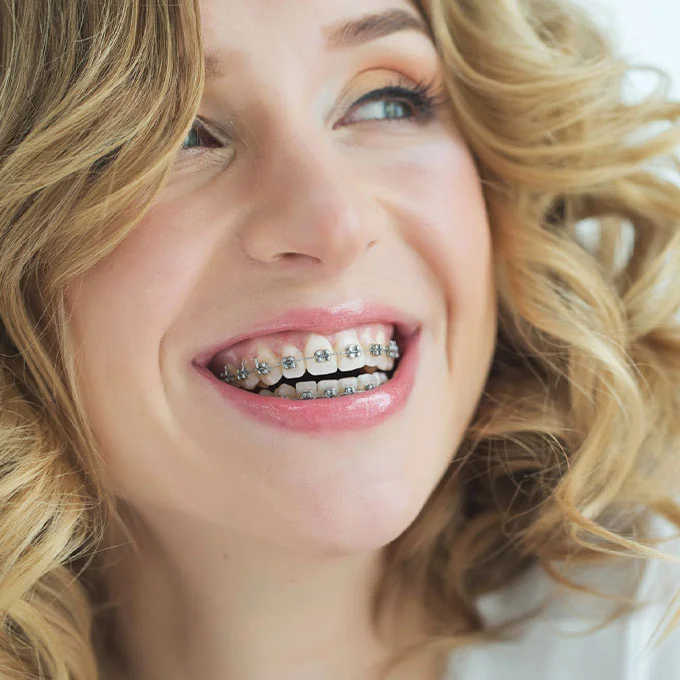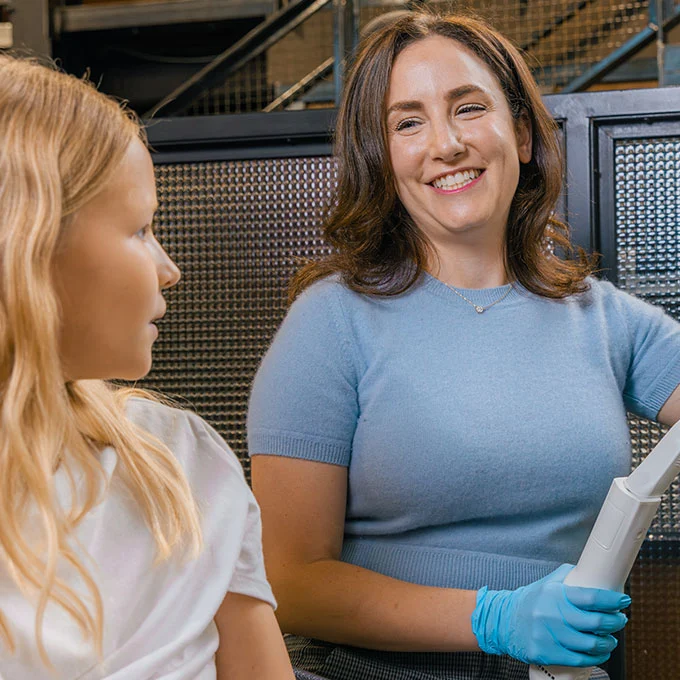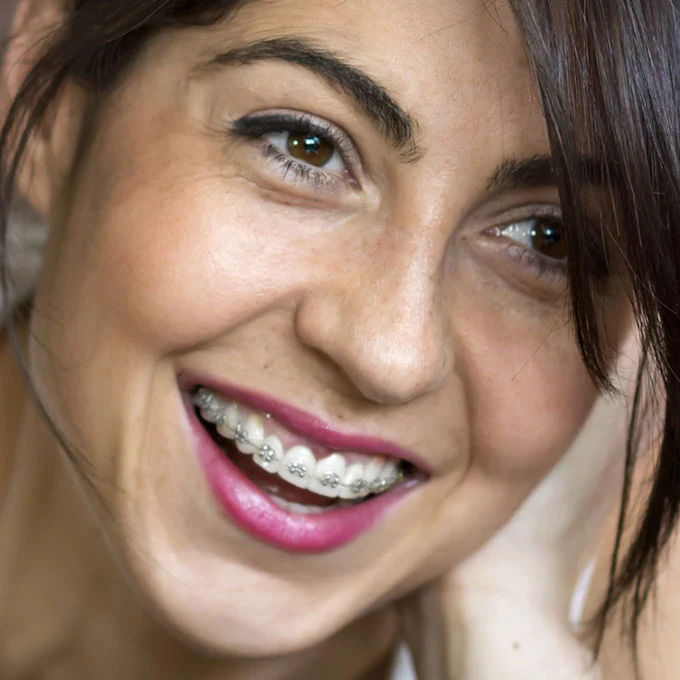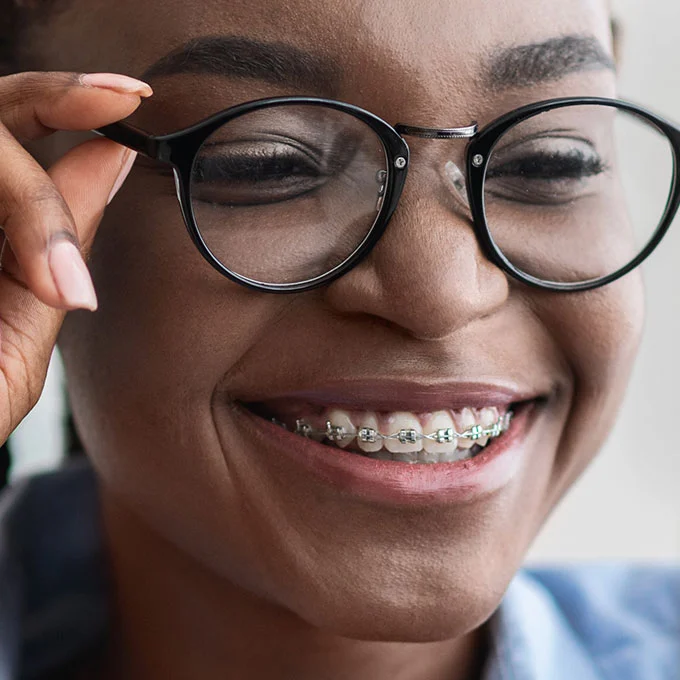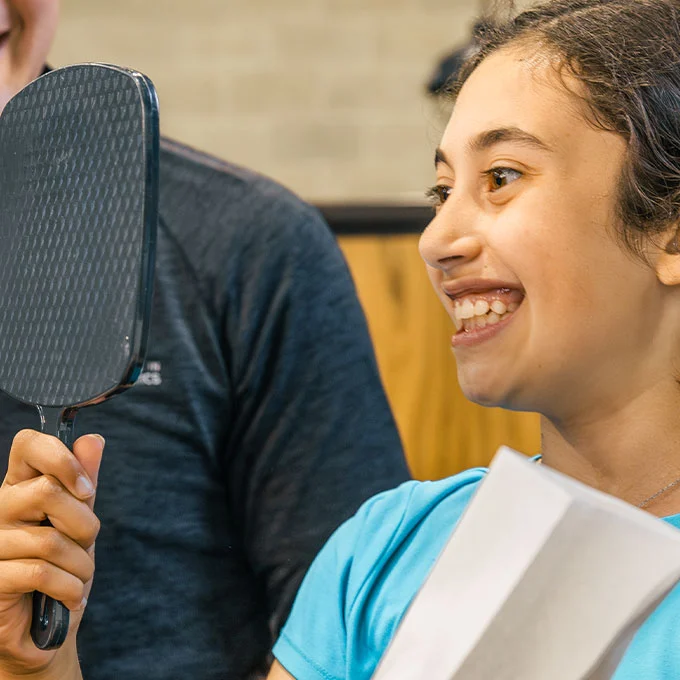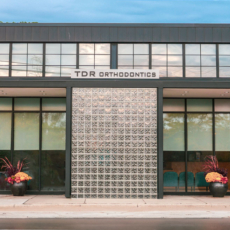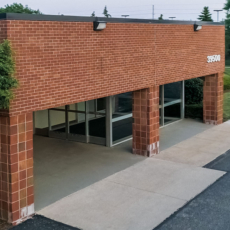Orthodontic Braces for All Ages
Offering both metal and ceramic/clear braces, our technology and treatment approach puts us at the forefront among orthodontists in the Detroit Metro area. Our twofold commitment to kids, teens, and adults is to make your treatment time fly by while delivering life-changing results you love to share. Learn more when you schedule your FREE braces consultation today.

Two Types of Braces. One High-Tech Approach.
Getting braces used to mean relying entirely on inexact, manual processes. Instead, we use computers to help perfectly place your brackets, and we offer remote monitoring technology using a unique scanning accessory and app on your smart device. As a result, you’ll have fewer clinic visits and better results compared to other practices, whether metal braces or clear/ceramic braces are the way forward.

Metal Braces
In the past, metal braces could be bulky, awkward, and obvious, but orthodontic treatment has made great technological strides recently. At TDR, “traditional” metal braces are smaller, less noticeable, and more comfortable than ever before. This makes braces look better and feel better, with sleeker brackets and wires that minimize mouth irritation. Another benefit: We can start your metal braces treatment the same day you come in!

Ceramic Braces
Also known as “clear braces,” ceramic braces function in much the same way as traditional metal braces, but they’re far less noticeable. This makes them a great choice for those who don’t want their in-treatment smile to stand out—and at the same time, would rather not keep up with clear aligners.
Breathe easy. Smile confidently.
Millions of children, teens, and adults suffer from airway problems—some without knowing. And because you’ll likely see us more than your regular doctor, every TDR patient, of every age, gets an airway screening as part of their comprehensive orthodontic exam.
It’s just one of the ways we use technology and teamwork to deliver the very best care, in the most efficient way possible. Let’s get you smiling more, starting today!

Braces FAQs
What foods should I avoid while I have braces?
There is really only a small list of food to avoid while wearing braces. This is to avoid damaging the brackets or to prevent food particles from becoming trapped between the brackets and wires. Food to avoid include:
- Chewy foods such as fruit leathers, beef jerky, or bagels
- Highly crunchy foods like raw carrots, chips, raw celery, and popcorn
- Sticky foods like caramel candy, licorice, and marshmallows
- Very hard foods like hard candy, hard breadsticks, or pizza crust
- Any food you have to bite into such as apples or corn on the cob. You can still enjoy these foods by slicing the apples or removing the corn from the cob!
How do I brush my teeth with braces?
- Before brushing, do a quick rinse with water. This will dislodge any food particles stuck between the wires or brackets.
- Brush beginning at the gum line, using a 45-degree angle of approach. As you move towards the brackets brush from both the top and the bottom, ensuring that the bristles reach under the wires and around the brackets. This process may take some extra time in the beginning, but once you are used to it, it will be routine for you.
- Follow up with a thorough flossing. You will need to use precise and careful flossing technique to make sure you do not dislodge or loosen the brackets or wires. Your doctor will help you how to perfect your flossing technique during your appointment.
Are braces painful? How do I ease the pain?
Generally, braces are not painful. However, you may feel a little sore or uncomfortable immediately after you first get them. This soreness is normal, and it will not last long.
A saltwater rinse can help relieve the soreness and inflammation. Dissolve a single teaspoon of salt in a full cup of lukewarm water and swish around your mouth for a few minutes. If soreness persists, you can take an over-the-counter pain reliever such as ibuprofen or acetaminophen. If you experience lip, cheek, or tongue irritation in the weeks after getting braces, some wax can alleviate the problem quickly.
I’ve heard of Temporary Anchorage Devices (TADs). What are they, and will I need them?
With severe bite problems and/or patients with missing teeth, orthodontists used to struggle with needing external anchor points to precisely control the adjustment of out of place teeth. The solution used to be unfortunate looking and inconvenient practices like headgear and external braces.
That is, until Temporary Anchorage Devices or TADs came along. Using an anchor attached to the jawbone, TADs eliminate the need for headgear and other uncomfortable treatments by providing an extra anchor point inside the mouth. They’re a safe and effective way to provide more exact orthodontic treatment for patients who need it—and not everyone does. One of our highly skilled TDR doctors will know whether TADs are right for you and can advise you about them during your consultation.
How long will I have to have braces?
The amount of time that you will need to wear braces varies and depends on several things (such as the severity of your bite problem). Most patients need to wear braces for 12 to 24 months, but this can be shorter or longer depending on your case. We’ll discuss this with you and give you a general idea of what you can expect.
Generally, however, you can expect to be in braces with us for less time than with other practices because of our modern, digital approach. We’ll let you know an estimated treatment time before you get your braces, and as treatment progresses, we can more accurately update you regarding how much longer you can expect to wear braces.
Can I get braces that are less noticeable?
Absolutely! One popular option for less noticeable braces is ceramic braces. Very similar to the traditional metal braces in that brackets and wires guide your teeth into the correct position, they’re more discreet. Instead of stainless steel, ceramic brackets are white or clear ceramic that blend in with your teeth.
How much do braces cost?
The cost of braces depends on which type of braces you choose, how long you will need treatment, and other factors unique to your case. TDR Orthodontics offers payment plans, and we’ll work with your budget to help you get you the orthodontic care you need.
In 2014, we launched Motor City Lab Works. With our own 3D printing lab, we’re able to offer the ultimate in customized appliances, and we’ve helped change the landscape in orthodontics to the benefit of our patients.

